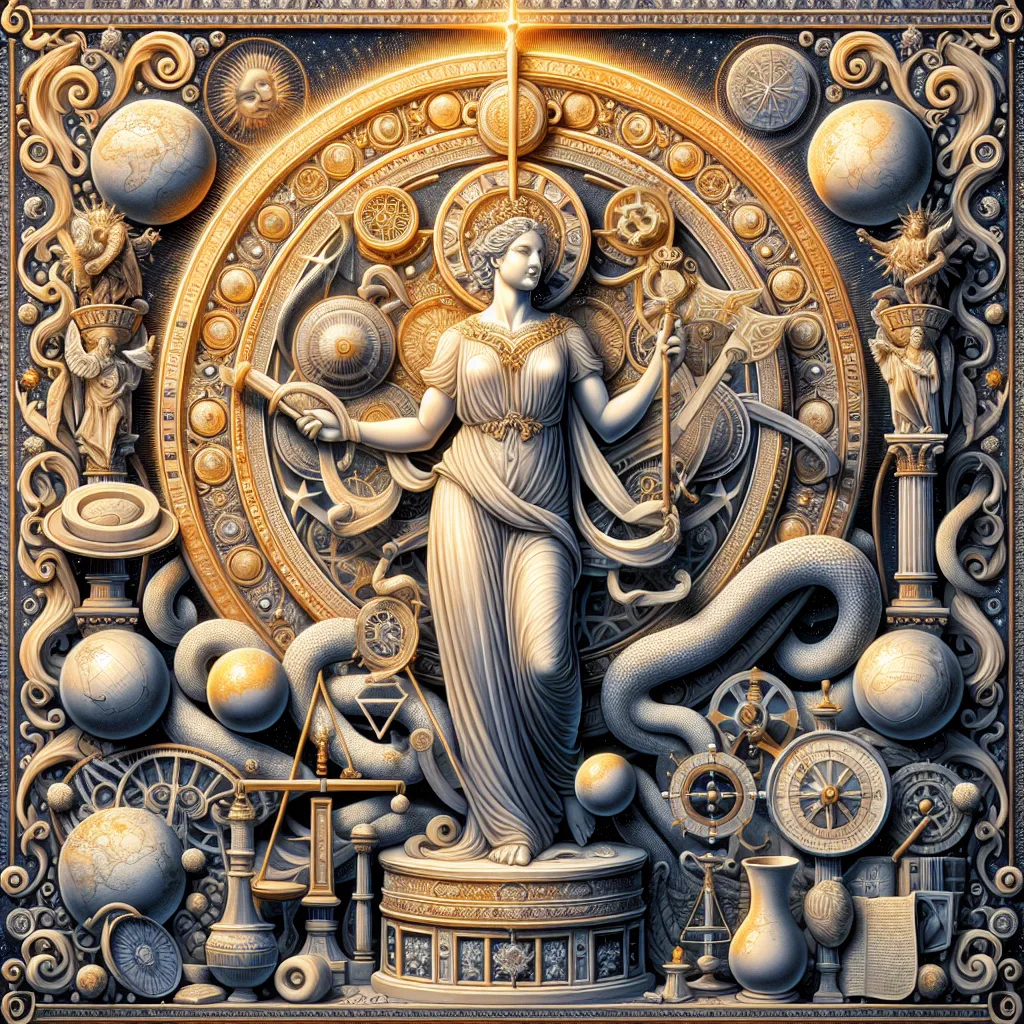
- Published on
- Authors

- Name
- You
The Role of Sophia: Bridging Science and Mysticism in Gnostic Mythology
If tales of divine realms and the creation of the universe captivate your curiosity, then the enigmatic figure of Sophia in Gnostic mythology will surely intrigue you. Through the lens of both mystical wisdom and the rigorous inquiry of science, let's delve into her story – a tale that weaves together the threads of divine error, cosmic redemption, and the birth of our material universe.
Who is Sophia?
In the complex web of Gnostic beliefs, Sophia is a multifaceted figure who symbolizes wisdom. Derived from the Greek word for wisdom, Sophia is often depicted as the divine spark encapsulated within the chaotic material world. Her narrative is one of cosmic intrigue, highlighted by exalted origins, a dramatic fall, and ultimate redemption.
Sophia in the Pleroma: A Realm of Fullness
The Pleroma – Greek for "fullness" – is a metaphysical realm where divine entities, also known as Aeons, exist in perfect harmony. Sophia initially resides here, embodying pure divine wisdom. However, her quest for deeper understanding and autonomy leads her to act beyond the boundaries of her aeonic domain.
A Chain of Cosmic Events: Sophia's Fall
Sophia's yearning pulls her away from the perfect fullness of the Pleroma. This deviation can be analogized with quantum mechanics' principle of quantum decoherence, where a particle loses its state of coherence with its quantum system. Just as the particle's isolation causes it to collapse into a singular state, Sophia's separation leads to an unintended creation – the Demiurge, an imperfect god.
| Gnostic Term | Modern Science Analogy | Description |
|---|---|---|
| Pleroma | Quantum Field | A state of full potential and harmonious existence. |
| Sophia's Fall | Quantum Decoherence | A disruption in a system leading to a collapse into an individualized state. |
| Demiurge | Wavefunction Collapse | The consequential entity resulting from an isolated, imperfect act of creation. |
The Creation of the Material World
The Demiurge, often portrayed in Gnostic texts as ignorant of the Pleroma's higher realities, brings forth the material world we inhabit – a creation marred by imperfection. This is a fascinating parallel to the idea of spontaneous symmetry breaking in physics, where the perfect symmetrical state transitions into an asymmetrical one, leading to the diverse structures in our universe.
The Redemption of Sophia: Sum of Wisdom and Quantum Healing
Sophia’s narrative doesn’t end with her fall. Her journey towards redemption is where the mystical converges beautifully with the scientific. In her efforts to restore balance, fragments of her divine essence permeate our reality, seeking reintegration with the Pleroma.
This quest for reintegration mirrors the scientific pursuit of the Theory of Everything (ToE) – an attempt to unify all fundamental forces of nature into a singular framework, akin to re-establishing the primordial completeness.
Reflecting on Sophia's Journey: A Harmonious Dance of Science and Mysticism
Sophia’s tale is not merely a myth but a powerful metaphor that resonates with the principles governing our physical universe. It serves as a reminder that within every act of separation there lies a potential for reunification, and within every fragment, a blueprint of the whole.
As we traverse Sophia’s journey — from the harmonious Pleroma, through the fractal patterns of her fall, to the redeeming echoes of divine wisdom — we engage with the cosmos itself. It calls upon us to blend the analytical rigor of science with the intuitive depth of mysticism.
So, as we stand on this cosmic stage, lets dance to the rhythm of Sophia’s wisdom. Who knows? Perhaps in understanding her story, we might catch a glimpse of our own quest within this ever-unfolding universe.
